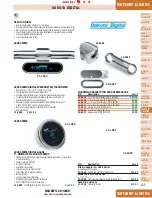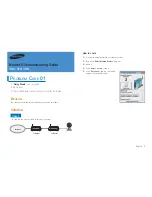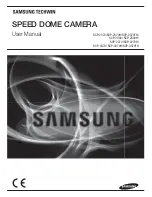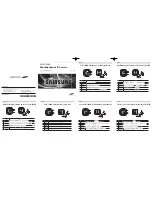
Doors, battery container lids and covers of battery
compartments must be opened or removed. During the
charge the battery must be removed from the closed battery
compartment on the truck. The ventilation must comply to
DIN EN 50272-3 standard. The vent plugs should stay on the
cells and remain closed. With the charger switched off
connect up the battery, ensuring that the polarity is correct.
(positive to positive, negative to negative). Now switch on the
charger. When charging the temperature of the electrolyte
rises by about 10°C, so charging should only begin if the
electrolyte temperature is below 45°C. The electrolyte
temperature of batteries should be at least +10°C before
charging otherwise a full charge will not be achieved.
A charge is finished when the specific gravity of the
electrolyte and the battery voltage have remained constant
for two hours.
Batteries fitted with electrolyte circulation system: if the warning
light on the pump controller is illuminated or if a defect signal
on the electrolyte mixing system appears, check that the piping
system is connected and examine the piping circuit for leaks or
defects. (see 3.4. Maintenance)
The air pipe should never be removed during charge.
2.3 Equalising charge
Equalising charges are used to safeguard the life of the
battery and to maintain its capacity. They are necessary after
deep discharges, repeated incomplete recharges and charges
to an IU characteristic curve. Equalising charges are carried
out following normal charging. The charging current must
not exceed 5 A/100 Ah of rated capacity (end of charge - see
point 2.2).
Watch the temperature!
2.4 Temperature
An electrolyte temperature of 30°C is specified as the rated
temperature. Higher temperatures shorten the life of the
battery, lower temperatures reduce the capacity available.
55°C is the upper temperature limit and is not acceptable
as an operating temperature.
2.5 Electrolyte
The rated specific gravity (S. G.) of the electrolyte is related to
a temperature of 30°C and the nominal electrolyte level
in the cell in fully charged condition.
Higher temperatures reduce the specified gravity of the
electrolyte, lower temperatures increase it. The temperature
correction factor is -0.0007 kg/l per °C, e.g. an electrolyte
specific gravity of 1.28 kg/l at 45°C corresponds to an
S.G. of 1.29 kg/l at 30°C. The electrolyte must conform to the
purity regulations in DIN EN 43530-2.
3. Maintenance
3.1 Daily
Charge the battery after every discharge.
Oerlikon Perfect Plus/Perfect Plus with electrolyte circulation:
towards the end of charge the electrolyte level should be
checked and if necessary topped up to the specified level with
purified water (according DIN EN 43530-4). The electrolyte
level must not fall below the anti-surge baffle or the top of the
separator or the electrolyte ”min” level mark.
3.1.1 Filling level sensors
In the case of batteries with filling level sensors, the
illuminated LED should be observed daily.
LED green
level OK
LED red blinking
level too low
Check the electrolyte level (visual inspection by opening
the vent plug or by the position of the float indicator of the
Aquamatic plug) and top-up with demineralised water at the
end of the charge.
Since the display always refers to a selected reference cell,
please also pay attention to the additional instructions under
“3.3 Monthly Maintenance.”
3.2 Weekly
Visual inspection after recharging for signs of dirt and
mechanical damage to all component parts of the battery,
pay particular attention to the battery charging plugs and
cables. By special applications with charge with a IU
characteristic curve an equalising charge must be carried out
(see point 2.3).
3.3 Monthly
At the end of the charge the voltages of all cells or bloc
batteries should be measured with the charger switched on,
and recorded. After charging has been completed, the
electrolyte density, electrolyte temperature as well as the
filling level (when filling level sensors are used) of all cells are
to be measured and recorded.If significant changes from
earlier measurements or differences between the cells or
bloc batteries are found further testing and maintenance
by the service department should be requested.
This should be done following a complete charge and
minimum of 2 hours rest time.
Measure and record:
•
total voltage
•
voltage per cell
•
if the voltage readings are irregular, also check the S.G. of
each cell
3.4 Annually
In accordance with DIN EN 1175-1 at least once per year,
the insulation resistance of the truck and the battery must be
checked by an electrical specialist. The tests on the
insulation resistance of the battery must be conducted in
accordance with DIN EN 1987-1. The insulation resistance
of the battery thus determined must not be below a value
of 50
Ω
.per Volt of nominal voltage, in compliance with
DIN EN 50272-3. For batteries up to 20 V nominal voltage
the minimum value is 1000
Ω
.
Batteries fitted with electrolyte circulation system:
the
filter of the air pump has to be checked during the annual
maintenance and eventually to be cleaned or replaced.
Earlier replacement of the filter is necessary if for undefined
reasons (no leaks in the air pipes) the defect signal of the air
mixing system on the charger or on the battery (on DC air
pump or remote signal) is illuminated. During the annual
maintenance, check the correct operation of the air pump.
4. Care of the battery
The battery should always be kept clean and dry to prevent
tracking currents. Cleaning must be done in accordance
with the ZVEI code of practice “The Cleaning of Vehicle
Traction batteries”. Any liquid in the battery tray must be
extracted and disposed of in the prescribed manner. Damage
to the insulation of the tray should be repaired after
cleaning, to ensure that the insulation value complies with
DIN EN 50272-3 and to prevent tray corrosion. If it is
necessary to remove cells it is best to call in our service
department for this.
5. Storage
If batteries are taken out of service for a lengthy period
they should be stored in the fully charged condition in a dry,
frost-free room. To ensure the battery is always ready for use
a choice of charging methods can be made:
1. a monthly equalising charge as in point 2.3, or
2. float charging at a charging voltage of 2.27 V x the number
of cells.
The storage time should be taken into account when
considering the life of the battery.
6. Malfunctions
If malfunctions are found on the battery or the charger our
service department should be called in without delay. The
measurements taken in point 3.3 will facilitate fault finding
and their elimination.
A service contract with us will make it easier to detect and
correct faults in good time.






















